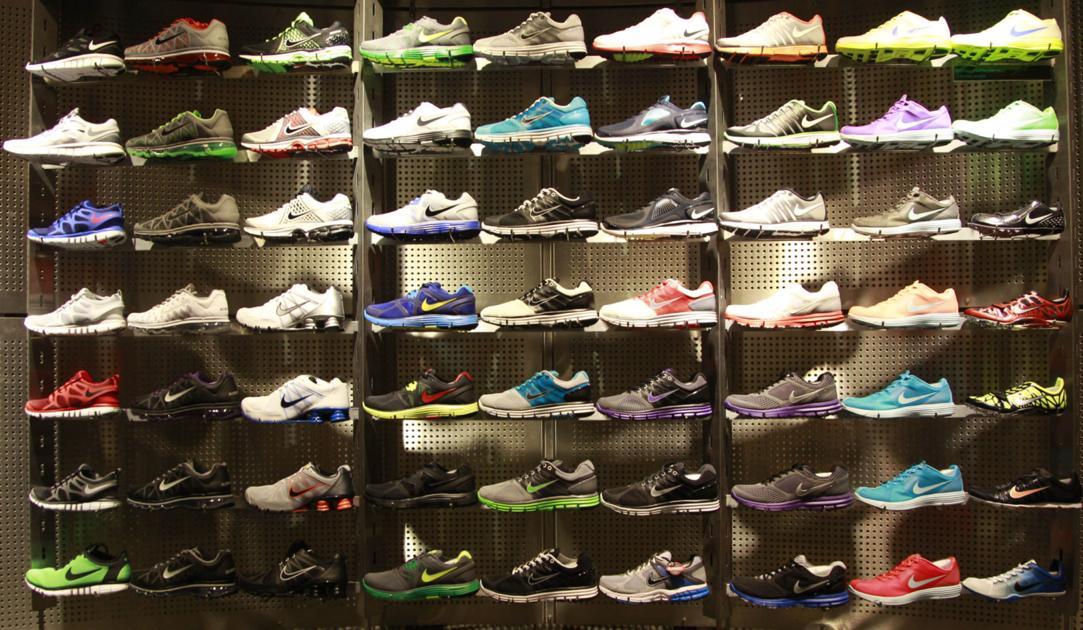
Choosing the right running shoe never has been easy. So many shoe companies make so many models, each touting high-tech features. How to make the smartest choice? Experts say shoe-buying is getting simpler. You don’t need a computer algorithm. You’ll probably fare best by trusting the feel.
Forget minimalist styles
“Minimalist shoes,” designed to mimic barefoot running, were all the rage a few years ago. The theory might have been good, but the results weren’t.
“To borrow from Winston Churchill, never has so much damage been done to so many by such little shoes,” Washington podiatrist Stephen Pribut says.
Many runners suffered forefoot pains and stress fractures because of the lack of cushioning. Others complained of calf strains and Achilles tendinitis.
A backlash followed, but so did a new approach. Although shoe companies brought back thick cushioning, they also abandoned bulky devices. “As a sort of minimalist legacy, many manufacturers stripped unnecessary extra bits out of their shoes, making them lighter and simpler,” says Jeff Dengate, shoe expert and runner-in-chief at Runner’s World magazine.
So long, ‘wet test’
Super-cushioning, like lack of cushioning, can’t eliminate running injuries. So neither a maximalist nor minimalist design is key to a good running shoe.
Nor is the shape of your foot, despite decades of advice to buy shoes based on the height of arches. In the “wet test,” a consumer steps into a pan of water and then onto a sheet of paper to create a footprint. If you have flat feet, they’re assumed to “overpronate,” or roll inward, and you’re supposed to buy rigid shoes. If you have high arches, you’re told to buy a shoe with extra cushioning and support.
But when Marine Corps medical staff conducted a randomized, controlled trial of this method, they found that using the wet test to select running shoes “had little influence on injuries.”
About the same time, biomechanics specialists changed their view of pronation, previously blamed for many injuries. Pronation is normal, says veteran Canadian biomechanics researcher Benno Nigg in his book “Biomechanics of Sport Shoes. It’s how people are designed to walk and run. Harmful overpronation is rare, Nigg says. A 2014 study in the British Journal of Sports Medicine confirmed his position, following 927 novice runners for a year and finding that the pronators had fewer injuries than non-pronators.
“The foot is going to move the way it prefers to move, regardless of the shoe,” says Clearwater, Fla., running podiatrist Brian Fullem, author of “The Runner’s Guide to Healthy Feet and Ankles.”
This means runners who buy shoes based on the height of their arches or the advice of salesmen need a new strategy.
Instead, do this
Try on lots of shoes, including brands and models you might never have considered. The best running shoes are the ones that feel best when you lace them up and give them a spin, Nigg says. “Comfort is hard to quantify,” he acknowledges in his book, “but everyone knows it when they feel it. And comfort is associated with performance, injuries, muscle activity and other biomechanical, physiological and/or psychological factors.”
Although some factors have changed, many essential shoe-selection tips remain the same. This list comes from the American Academy of Podiatric Sports Medicine and the experts interviewed for this article. Regard them as tried-and-true essentials.
• Buy at a store. You might save $10 to $20 online, but in-store fitting is so key that you can’t put a price on it.
• Try on shoes in late afternoon or early evening, because your feet swell during the day (and when you run).
• Wear the same wicking socks you use to run. Also wear any regularly used shoe inserts or orthotics.
• Pay careful attention to both feet: They’re slightly different sizes, move differently and receive different amounts of force.
• Avoid shoes that are too short. Select a pair with a finger’s width of space between your toes and the front of the shoes.
• Jog around in the store or on a nearby sidewalk. You can’t judge running shoes by walking.
• Buy the simplest, least gimmicky shoe that feels good and works well. That doesn’t mean the lightest or most minimal, but it does mean avoiding excessive weight and unnecessary doodads. Also, there’s no evidence that expensive shoes are better for you.
How do you know you’ve found the right shoes? Here’s how Jonathan Beverly puts it, based on his decade-plus as head shoe tester at Running Times magazine and research for his book, “Your Best Stride.” “With the right shoes, you land where you’re supposed to land, the shoes bend where they’re supposed to bend, the cushioning feels good without slowing your stride, the support is neither too much nor too little, and you push off smoothly and strongly.”
You won’t find a shoe like this in 60 seconds. Fullem says runners should sample five or six pairs before they choose. Dengate agrees. “If you try on several different pairs of shoes,” he says, “you might be surprised to discover a new shoe that you’ll love.”
Once you’ve fallen in love, break in your purchase gradually. Even if the shoes feel great at the store, you should never race in a new pair. Finally, keep track of miles run in the shoes. When you reach 300 to 500 miles, start searching for your next pair. It’s better to buy sooner than to risk injury, time off and potentially expensive medical visits.
http://bit.ly/2TKR41Q




0 Yorumlar